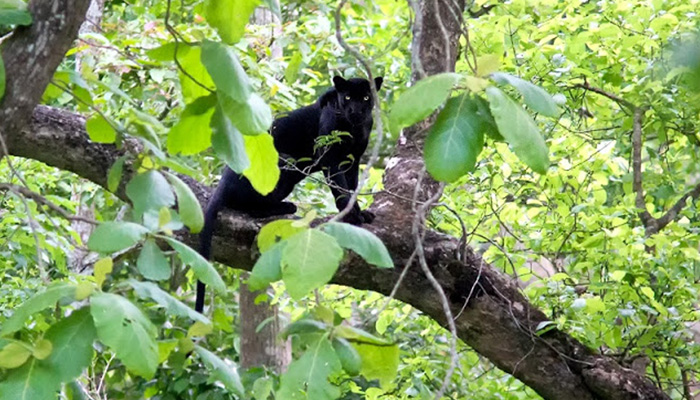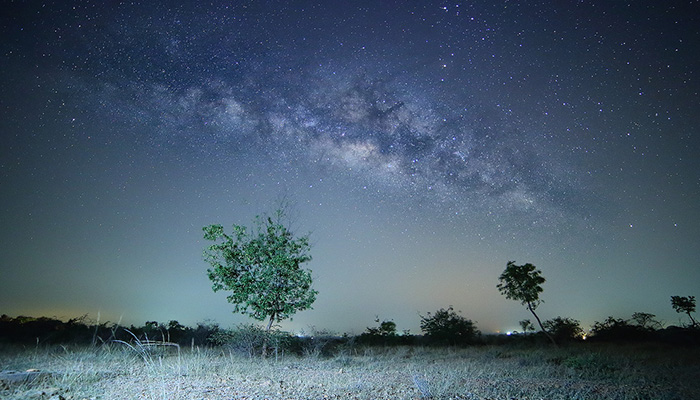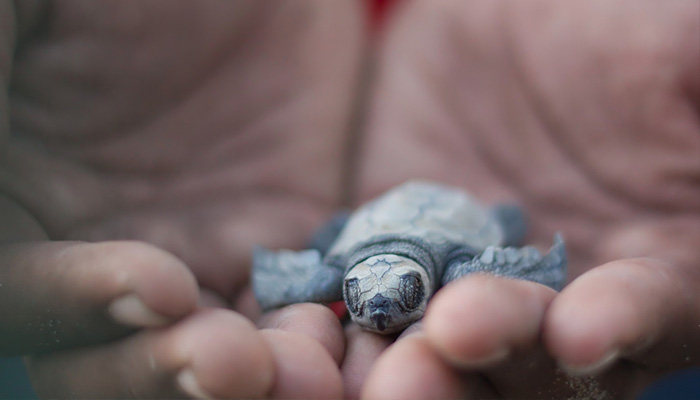
I have been writing articles on wildlife & my experience for a while now. however, photographing a “Black Panther” was always remained as a dream until June 2016. As wildlife lover, our expedition will always fall on the search of an elusive Black leopard, when one does see Black Panther. the sheer beauty of the surroundings just takes the breath away.
Getting to Kabini – The Land of Leopards!
Any Forest in the monsoon is an experience like no other – My thoughts takes me back to Kabini in the monsoon, which is generally not been considered as the best time to visit, as most animals disperse in the green thickets , and thus makes the sightings dull. The thrill of driving through a lush dense forest without knowing what might be waiting a few feet away is much more thrilling and nail biting than just seeing loads of animals on a plain sight. A very few people are tend to experience the forest during the monsoon. The vegetation here consists mainly of North Western Ghats moist deciduous forests (teak and rosewood predominating in the southern parts) along with tigers, Leopards & Elephants. the park recognized as an important bird area. the park has a wide-over of 270 species of birds, which includes the critically endangered “Oriental white-backed vulture”, “vulnerable lesser adjutant”, “greater spotted eagle” and the “Nilgiri wood-pigeon”.
There is no wonder that the park is declared as thirty seventh Project Tiger reserve in 1999.
Facts
Leopards are well known for their cream and gold spotted fur, but some leopards have its inversion of black fur with dark spots, which are often mistaken as panthers. The dark fur of black leopards makes the spots not to be seen highlighted and that takes to a man to be very difficult to recognize it. Close examination on the color of the black panthers will reveal that the typical marks (known as rosettes or spots) are still present and are hidden by the excess black pigment.
They appear almost in solid black and are often called as black panthers. Melanistic leopards are widely called as black panthers, which are also known as black leopards and surprisingly, the term “black panther” is meant for Melanistic Jaguars as well. Black panthers are found in the dense tropical rain forest, where the sunlight is low. The dark coloration acts as better camouflage in low sunlight conditions on the forest floor. Chital, black-napped hare, langurs and mouse deer are normally the prey of these cats.
The “Preparations” to spot the Ghost of Forest
There is a general saying that one should travel with extreme luck to spot a Black Panther in the wild. While I say there is quite a little truth behind the statement, in my personal opinion, there are more knowledge and skills involved in spotting the big cats of the wild than just the luck. There should be a preparation and work involvement to create a favorable environment for luck to play its game. Most of the time , I follow only the unfinished tracks or the smallest hints of the animal’s passing, such as bent grass stem, strand of hair, delicate disturbances in the leaves on the forest floor.
Real tracking (as different to the fake version you often read about and see it on Televisions) is not at all stylish activity in fact. However, the movement of these big cats is been constantly tracked by the very own natural GPS of the jungles.
1. Langurs – sitting on the high perches on tree tops. keep a constant vigil on the movement of these cats and give out a warning of danger.2. Cheetal or Sambar> – with their acute sense of hearing and sighting, they send out warning calls of these predators movement.
Black Panther Sighting
Considering all the field-crafts, we drove on a safari game track in the evening of 5th June, 2016. while the wind was pleasantly cold, we stopped the vehicle for some time in soaking silent in the beauty and then taking off close to where we had been waiting for the forest birds to come out! When heard that the Black Panther is tracked and spotted, my heart skipped a beat. The first click that we had was, when it was safely sleeping at a very far distance on a low structured and irregularly grown giant tree. It stood completely deeper into the green under cover. Suddenly, when we realized that it has turned its head to the other side, Panic and excitement were ruling us. It turned its face with canopy blocking wind whistles around the trunks on a fast falling twilight.
First Black Panther of our life!
Black Panther was sitting out very far in the open to see what all was about, but seemed comfortable with our presence. He quickly realized that he is being watched, and he looked us out to check our presence with a very scary sight. His eyes were sparkling like gold. shiny black velvet coat has actually impressed my heart, I could say. That was the precious moment of my life that I really loved making this image and trust me this is the most amazing and wonderful experience by far.
“High fives” were shared all-round the hands later to a couple of minutes, which makes me even now to realize how overjoyed we were! We had two days in the forest and by the first day we had already clapped our eyes on “The Black Panther”. These Black leopards are the most elusive and secretive masters of the large felids, who are highly difficult to trace and to locate.
A long awaited dream came true. This moment will be cherished all our lives as I could not be able to get over from this sighting even now, a true dream not just for me but I am sure for all wildlife lovers.




